|
As Walter Anderson once said, ‘You and I are not what we eat; we are what we think.’ The way we think, particularly, our “self talk” is arguably the greatest influencing factor over our life’s success or failure. Its impact on our general wellbeing is unquestionable.
Self talk is our internal dialogue, how we talk to ourselves. Psychologists and neuroscientists have established that every person carries on an ongoing internal dialogue of between 150 and 300 words a minute. This calculates to around 50,000 thoughts a day! While most self talk consists of neutral thoughts that serve our daily activities, such as ‘I need to get some lunch’, a significant proportion of self talk is either harmful or helpful.
You can feel calm or worried, confident or unsure, depending on what you tell yourself. Your self talk can influence your self esteem, outlook, energy level, performance, and relationships with others. It can even affect your health, determining, for example, how you handle stressful events, or how easily you replace unhealthy behaviours with healthy ones. Self talk affects your job prospects, career successes and the achievement of goals. There is no area of your life that will not benefit from positive self talk.
While many of us are caught in a rut of negative self talk, we can learn to change our thinking habits. This article will look at a range of practical strategies to recognise and replace negative thoughts, or "stinkin’ thinking", with positive self talk.
Focusing only on problems: This is the essence of complaining. We dwell on the problem, instead of solutions. Instead: Assume most problems have solutions, and ask "How do I want this situation to be different?"
Catastrophising: Every bad thing that happens is a horrible disaster. Instead: Be realistic in your assessment and stop scaring yourself. Yes, bad things do happen, and many bad things are often inconveniences, mistakes, and foul-ups, not necessarily traumas, tragedies, or disasters.
Expecting the worst: "What if he doesn't like me?" "What if I bomb out in the job interview?" Expecting the worst does not encourage you to behave effectively. Expecting the worst only promotes anxiety. Instead: Ask questions that presuppose positive outcomes. "How can I make a favorable impression?" "How can I prepare for the interview?"
Shoulds: Should, ought, must, have to... used carelessly, these words presuppose rules and standards for behaviour that do not exist in reality. They imply a consequence for noncompliance, and often evoke guilt. For example, according to the law, we "should" obey posted speed limits, or pay a fine. Is it equally true that "I should be smarter than I am." or "I ought to be married by now."? Of course not! Instead: Replace the words should, ought, or must with the word "COULD" and realise the gift of choices.
Thinking in absolutes: We exaggerate reality with words like "always," "never," and "everyone," as in "I always eat too much. I will never be slim." Instead: Replace exaggeration with words that more accurately reflect reality. Example "I often eat more than I need, but I can change that."
Negative labels: Negative labels are the tools we use to lower our self-esteem and that of others. For example: "I'm stupid," or "I'm fat." When we say phrases like these often, they become a part of our identity and we can begin to dislike who we are. Instead: Remember, people are not their faults or shortcomings. You may engage in stupid behaviour occasionally, but that doesn't make you a stupid person. Change your negative "I am" statement into a statement about behaviours. Example: "I make unhealthy choices when it comes to food." It's easier to change a behaviour, than to change your identity.
Blaming: We assign guilt, instead of solving the problem. If we can blame others, then we can feel vindicated in a wrong-doing, and avoid responsibility. Instead: Focus on what YOU can do to promote a solution to the problem.
Now you know what negative self talk sounds like. Negative self talk is usually a mixture of half-truths, poor logic, and distortions of reality that perpetuates negative emotions, such as pessimism, guilt, fear, and anxiety. It often occurs in times of emotional turmoil, or when we are going through stress or a personal transition.
When you catch your negative self talk, take a deep breath, relax, and remove yourself from the situation. Get up and stretch, take a walk, or get a drink of water, in order to interrupt your train of thought and get out of the negative rut. Write down some of your negative thoughts and then ask yourself "Are the things I'm saying true? Are there other possibilities and meanings that I could get from these circumstances?". Then replace your negative thoughts with realistic, positive thoughts, and write those down too. Soon you'll stop that self talk in mid-sentence.
The Spring 2009 edition of Insight will feature the second part to this article, exploring the value of affirmations to develop a habit of positive self talk. Personal Safety Australia awareness sessions and workshops cover a range of strategies to promote safety and wellbeing, including positive self talk. For further information, visit our website or contact us.
References:
Pearson, Judith E 2009, Develop the Habit of Healthy Self-Talk! (online). Available: http://www.theselfpages.tripod.com/id44.html [Accessed 16/6/09].
Kolezynski, J 2009, Belief, Self Talk and Performance Enhancement (online). Available: http://www.selfhelpmagazine.com/articles/sports/ selftalk.html [Accessed 16/6/09].
The much anticipated inaugural Safe Start Presenter Workshop was held last month at the Virginia Palms Conference Centre in Brisbane. The one day workshop was attended by a group of 20 Department of Emergency Services Cadet Program Adult Leaders, representing cadet groups throughout the State, including Hervey Bay, Childers, Bundaberg, Ingham, Cooroora, Charters Towers and around SE Queensland.
The Safe Start Presenter Workshop is designed to equip, empower and inspire protective adults with a sound understanding of risks, key safety messages and support strategies to maximise the ‘people safety’ of children and young people. Protective adults includes parents, carers, teachers, social workers, counsellors, support workers, child protection workers, community workers, childcare providers, youth workers and service club leaders. ‘People safety’ refers to any threat to a child or young person perpetrated by known or unknown adults or other children and young people including various forms of abuse, bullying and abduction.
The interactive workshop includes a range of activities, and provides participants with resources, to assist them to conduct their own in-agency awareness sessions for protective adults and to deliver safety sessions for children and young people. Training is custom-made to best reflect the age group of children and young people most relevant to participants, ranging from early childhood to Year 12 students.
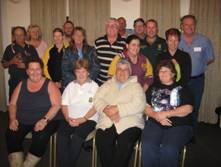
Emergency Service Cadet Program Adult Leaders
at the Safe Start Presenter Workshop (May 2009)
Participants gained a sound understanding of: safety risks facing children and young people; dangerous "safety" messages and practices; fundamental safety messages to empower children; and supportive strategies to maximise children’s safety. Participants also gained an awareness of indicators of abuse and information to access further resources and referrals.
At the conclusion of training, 100% of participants stated the workshop was important to do their job and recommended the workshop as a permanent part of the Adult Member Development series.
Participants comments included:
- ‘All adult leaders should do this course as it is an eye opener for a lot of people’
- ‘Excellent – need to share this information and ensure all are informed, including parents’
- ‘I learnt heaps and enjoyed it’
- ‘Very interesting and it helped to reinforce things'
- ‘Facilitator was very personable, professional and knowledgeable’.
- ‘Well done! Very well presented, I found it very interesting!’
The Safe Start Presenter Workshop joins the Safe Start Awareness Session in the Safe Start suite of services. The 2 hour Safe Start Awareness Session provides protective adults with an awareness of risks, key safety messages and support strategies to maximise the ‘people safety’ of children and young people.
Redlands Regional Safety House Committee recently hosted a Safe Start Awareness Session for protective adults including teachers, guidance officers, school chaplains, Safety House members and concerned parents.
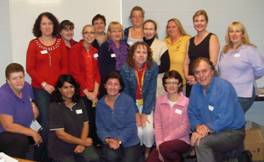
Redlands Regional Safety House Committee
Safe Start Awareness Session (May 2009)
Participant comments included:
- ‘This was absolutely fantastic! It should be compulsory for every adult. I would love to attend more training.’
- ‘This will help me teach students and teachers more ways to protect children’.
- ‘The content of the workshop was great.’
- ‘Brilliant. When is the next one?’
- ‘Very informative. Picked up a lot of ideas, helpful hints and information I did not know’.
- ‘Very informative, well worth attending’.
Read on for information about the background of the Safe Start program.
The Safe Start: Protective Behaviours for Children and Young People (Safe Start) program was developed in 2008 to address deficiencies of the international Protective Behaviours program. Safe Start retains the strengths of Protective Behaviours while incorporating additional key safety concepts and delivery methods to reflect current best practice in child protection.
The program seeks to maximise the safety and enhance the wellbeing of children and young people and encourage them to reach their full potential. While the program’s concepts and strategies apply to a broad range of situations, there is a focus on reducing the risk of harmful behaviours including physical, emotional and sexual abuse, neglect, bullying, suicide, self harm and substance abuse.
The program has been independently reviewed by Dr Jennifer Sanderson, Griffith University who compared the program against best practice guidelines for prevention programs. Safe Start has been identified as an effective program in providing prevention education to reduce the risk of victimisation for children and adolescents, including the various harmful behaviours.
For further information about the Safe Start program or services, please visit our website or contact us.
Personal Safety Australia, in conjunction with our non-profit sister organisation, Children’s Safety Australia Inc. will soon be releasing a range of safety stickers for teenagers. The stickers depict the four key safety concepts of the Safe Start: Protective Behaviours for Children and Young People program:
- Be yourself, everyone else is taken: to build a healthy self esteem and to encourage respect and empathy for others.
- Safety is my right: to identify and effectively respond to potentially unsafe situations and environments, including bullying.
- My body, my say: To identify, prevent and stop all forms of abuse.
- I can get help: To access help from trusted adults and relevant organisations.
Here’s a sneak preview...
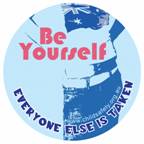 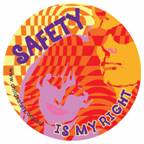
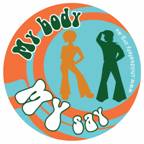 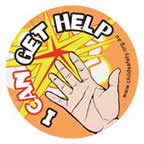
These groovy stickers have been created by the very talented Michaela Wright, Wright Side of the Brain and will soon be available via the Children’s Safety Australia Inc website (www.childsafety.org.au). Personal Safety Australia highly recommend ‘Wright Side of the Brain’ for any web design or graphic art work (email: mlwright05@gmail.com).
Stickers for primary school students are also underway with slightly different worded themes and a younger “look” to better suit this age group. A range of additional Safe Start resources including posters and teachers kits are also being developed. Future Insight editions will keep you posted. In the meantime, contact us for further information.
A relatively new danger facing young people throughout the Western world is the growing trend of ‘sexting’, which can result in dire, and often unforeseen, consequences for a range of parties. Sexting is the act of sending sexually explicit messages or photos electronically via mobile phone, email or other technology.
Sexting was reported as early as 2005 and has since become a common practice, particularly among teenagers, and increasingly, among pre-teens. It is estimated as many as one in five teenagers have sent explicit photos of themselves via mobile phone or uploaded such images to social networking pages such as Facebook and MySpace. Many more receive these images and/or view them on the networking pages of friends or acquaintances.
The primary danger of sexting is the lack of control over the image once it has been sent or posted on the internet. A photo that may have been taken for a boy/girlfriend or potential suitor can easily be forwarded to many other recipients who can post them on the internet and forward the message to countless others.
Such was the case of Jessica Logan, an 18 year old student from Ohio, USA, who sent nude photos of herself to a boyfriend. When they broke up, he forwarded them to fellow school students and, before long, the entire school community was aware of the photos. Jessica became the victim of harassment at school and, after months of depression, she hanged herself in her bedroom.

Jessica Logan committed suicide as the result of sexting.
The wide distribution of images is not the only danger. Those caught sending explicit photos to others may be charged with child pornography offences, even if they are the subject of the images. In 2007, 32 Victorian teenagers were charged with child pornography offences as a result of sexting. Another danger is for schools who may be open to litigation if they do not address this increasing threat to the student population.
Parents, teachers and other protective adults are encouraged to discuss the dangers of sexting with children and young people. Ideally with their child/ren’s permission, parents should also have access to their children’s social networking page and be able to review messages and images sent from their mobile phones.
Personal Safety Australia offers Personal Safety Workshops to maximise the safety and wellbeing of children and young people. Workshops address a broad range of safety threats including sexting. Please visit our website or contact us for further information.
References:
Celizic, M 2009, Her teen committed suicide over 'sexting' (online). Available: http://www.msnbc.msn.com/id/29546030/ [Accessed 16/6/09].
Porter, L (The Age) 2008, Malice in Wonderland (online). Available:
http://www.theage.com.au/technology/malice-in-wonderland-20090616-cejh.html[Accessed 16/6/09],
Child Protection Week promotes the belief that it is everyone's responsibility to make their community child friendly. This year Child Protection Week will be held from Sunday, 6 September to Saturday 12 September.
Personal Safety Australia encourages your school or organisation’s involvement in marking the week with an event to promote children’s safety. You may consider a morning tea, colouring in or poster competition, or a children’s safety talk for children or protective adults (e.g. parents/carers and teachers).
As a special offer to support Child Protection Week, we are offering a 20% discount on all children’s safety workshops and awareness sessions held before the end of September 2009. To take advantage of this offer, visit our website to view the range of children’s safety services available or contact us for further information or to make a booking. |